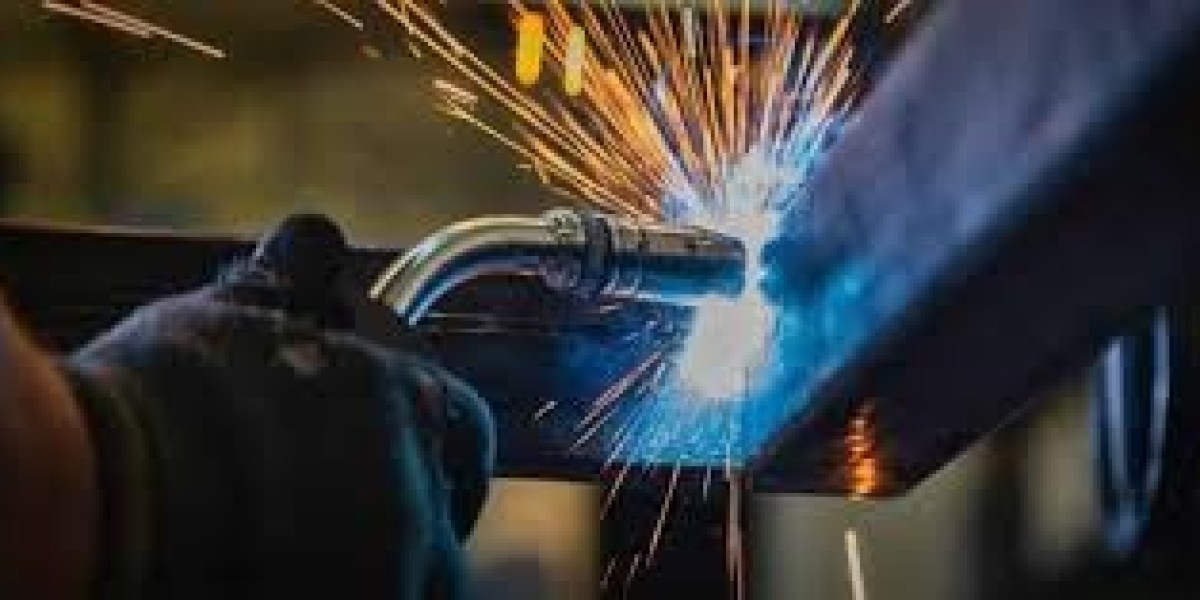In the world of fabrication and metalworking, welding sheet metal stands out as one of the most essential yet technically demanding skills. It plays a crucial role in manufacturing everything from automotive parts and construction panels to home appliances and intricate decorative structures. Despite the rise of high-tech fabrication machines, the need for skilled welders who can handle thin metals with finesse remains irreplaceable.
Whether you're working in an industrial facility or a small workshop, understanding the nuances of welding sheet metal is fundamental to achieving strong, clean, and visually appealing welds.
The Unique Challenge of Welding Thin Metals
Sheet metal, by its very nature, is thin — typically ranging from 0.5mm to 6mm. This makes it vulnerable to warping, burn-through, and weak weld joints if not handled properly. Unlike thicker materials, thin sheets require precision control over heat input, weld speed, and technique.
This is where mig welding sheet metal becomes a popular choice. It allows for controlled heat application and produces clean welds when properly adjusted. However, success lies not just in the equipment, but in the skill, patience, and experience of the welder.
Choosing the Right Technique
There are various methods used for welding sheet metal, each with its own advantages:
MIG Welding: Arguably the most accessible method for beginners, MIG (Metal Inert Gas) welding provides a relatively straightforward approach for thin metal sheets. Its continuous wire feed system allows for faster work with fewer stops, reducing the risk of overheating one spot.
TIG Welding: For those seeking high precision and a cleaner finish, TIG welding is the go-to. It’s ideal for aluminum or stainless steel sheets and situations where appearance matters. However, it requires more skill and time.
Spot Welding: Common in automotive manufacturing, spot welding joins two sheets at specific points using pressure and electrical current. It’s efficient for high-volume production.
Regardless of the method, the key to effective welding sheet metal lies in understanding heat control, joint preparation, and the correct filler material.
Tools Every Sheet Metal Welder Should Have
A professional sheet metal welder requires more than just a welding machine. Essential tools include:
Auto-darkening welding helmet for eye protection
Welding gloves designed for dexterity
Sheet metal clamps and magnets for precise positioning
Grinding tools for finishing
Heat sinks or copper backers to prevent burn-through
All these tools support the welder in delivering strong, seamless joints while minimizing distortion and warping.
Preparation Is Key
Before starting the welding process, proper preparation of the material ensures higher success. Clean surfaces are essential; remove any oil, paint, or oxidation to ensure better arc stability and stronger welds. Aligning and securing the sheets tightly prevents movement and ensures the weld penetrates both layers evenly.
For weld sheet metal work, even a slight misalignment can lead to joint failure or uneven welds, which compromise both structural integrity and appearance.
Avoiding Common Pitfalls
Many beginners face issues such as excessive spatter, incomplete fusion, or burnt-through edges. These problems often stem from poor heat control or incorrect travel speed. With mig welding sheet metal, for instance, it's vital to select the appropriate wire thickness and voltage settings.
A helpful tip is to use the "stitch" or "tack and move" method: apply short bursts of welds spaced apart to allow the metal to cool, then fill in the gaps. This technique minimizes warping while maintaining joint strength.
Why Experience Matters in Welding Sheet Metal
Though modern machines offer presets and automation, nothing replaces the eye and hand of a skilled sheet metal welder. The ability to judge the right torch angle, wire speed, and arc length comes only through hands-on practice.
This experience becomes even more critical when working on projects that require visual perfection — like decorative railings, exposed HVAC ducts, or custom car panels. In such cases, a flawless welding sheet metal job becomes a reflection of craftsmanship and attention to detail.
Application Across Industries
From aerospace and automotive to construction and consumer goods, welding sheet metal forms the backbone of fabrication. The ability to weld sheet metal accurately and efficiently directly impacts the durability and appearance of the end product.
In industries where safety is paramount, such as aircraft or pressure vessels, even the smallest welding defect can be catastrophic. That’s why strict quality control and inspection processes are in place to ensure every weld meets specifications.
Why Consistency Matters
Consistency in technique is vital in sheet metal welding. Each weld must be repeatable — not only for visual uniformity but also for maintaining structural integrity. This is especially true in batch production, where identical components must meet tight tolerances.
Investing in quality equipment and regular training goes a long way in maintaining consistency. At Zintilon, emphasis is placed on both the technical and artistic side of welding, ensuring that each project meets the highest standards.
Looking Ahead: Technology and Innovation
As industries demand lighter, stronger, and more efficient products, the importance of welding sheet metal will only grow. Emerging technologies like robotic welding systems and AI-assisted quality inspection are changing the landscape. Yet, even as automation increases, human welders remain essential — especially for custom or complex work.
Advancements in materials, such as high-strength alloys and composite metals, also challenge welders to adapt their methods continually. Those who can evolve with technology while maintaining traditional welding finesse will remain in high demand.
Final Thoughts
Mastery of welding sheet metal combines art, science, and precision. It’s a discipline that requires not just tools, but insight — knowing how metal behaves under heat, how to prevent warping, and how to make a weld strong and beautiful.
As fabrication continues to evolve, the skill of welding sheet metal will remain a cornerstone of quality manufacturing. With proper technique, continuous learning, and attention to detail, welders can produce work that is not only functional but lasting and inspiring.






